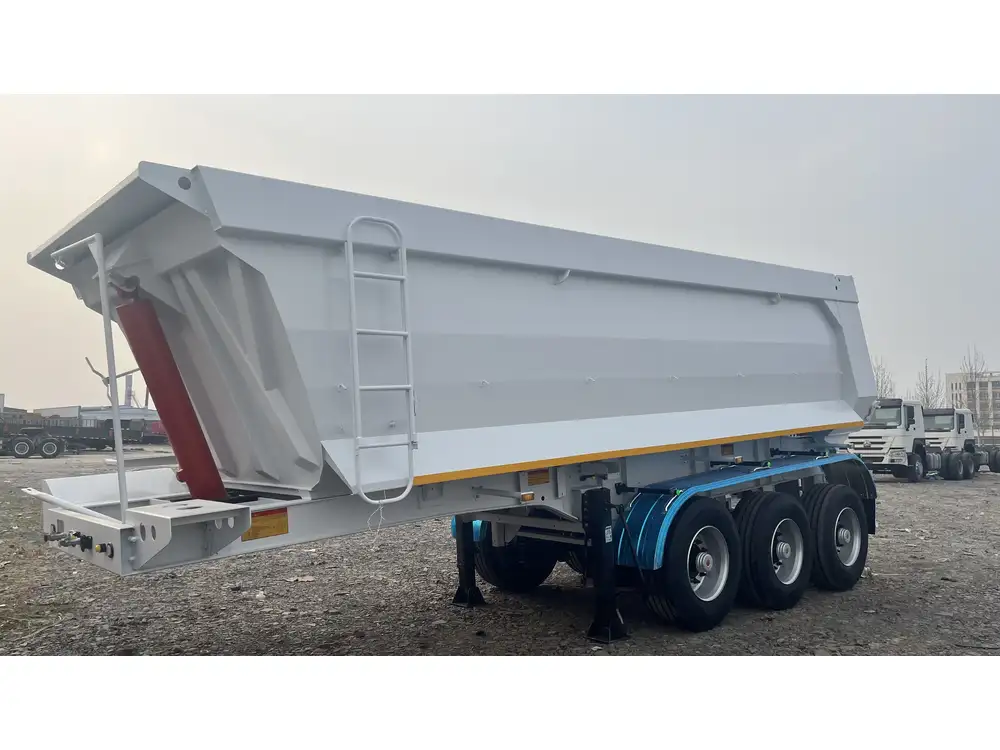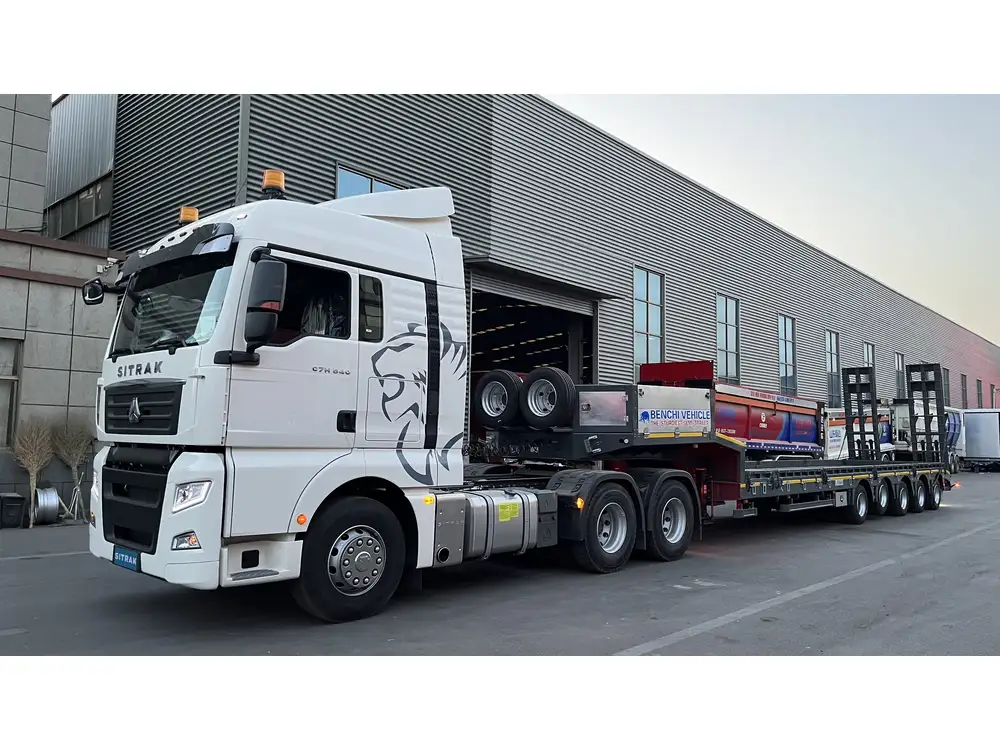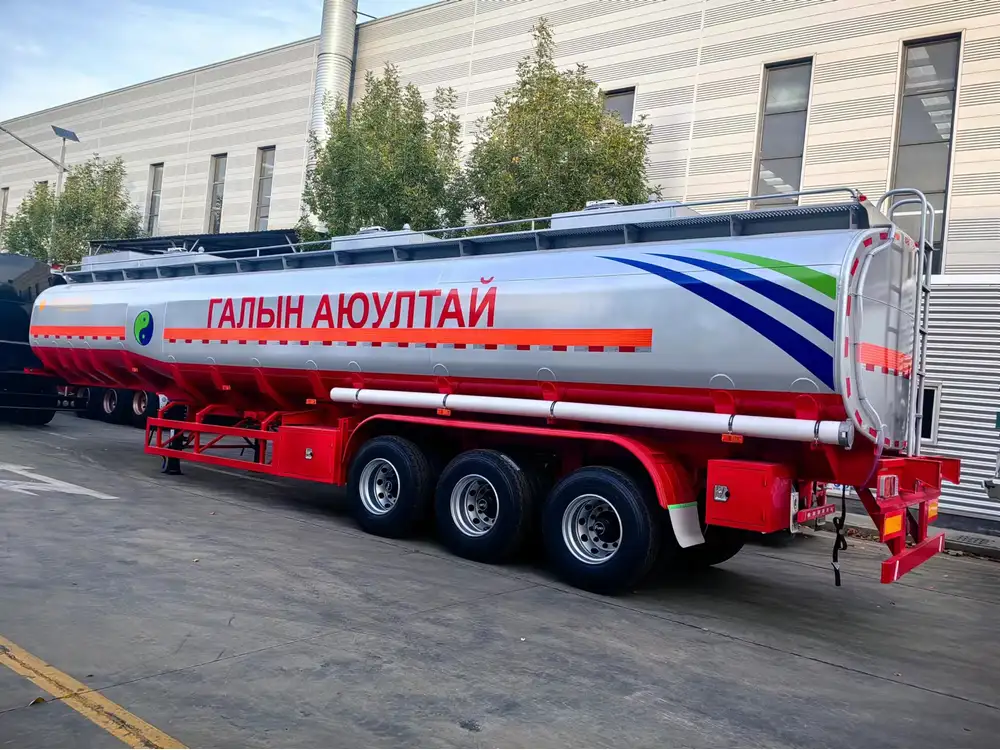When it comes to transportation and logistics, understanding the legal height of semi trailers is crucial for compliance with federal and state regulations. This knowledge not only ensures the safety of goods transported but also minimizes potential fines and operational interruptions. This article dives deep into the nuances of legal heights, differences in regulations by state, and practical solutions for manufacturers, operators, and owners of semi trailers.
The Standard Legal Height of Semi Trailers
Federal Guidelines
In the United States, the Federal Highway Administration (FHWA) regulates certain dimensions for commercial vehicles. According to federal law, the maximum height for a semi trailer is typically capped at 13 feet 6 inches (or 4.15 meters) from the ground to the top of the vehicle. This limit is designed to accommodate the majority of highway structures, bridges, and overpasses, ensuring safe passage for all vehicular traffic.
| Vehicle Type | Maximum Height |
|---|---|
| Semi Trailer | 13 feet 6 inches (4.15 m) |
| Single Unit Truck | 13 feet 6 inches (4.15 m) |
| Bus | 13 feet 6 inches (4.15 m) |

State Regulations Variance
Despite the federal guidelines, states are given the authority to set their specific regulations regarding vehicle heights. Variations can arise due to localized infrastructure, such as bridges with lower clearances. For instance:
- California: Allows vehicles to be up to 14 feet in height if the vehicle is carrying specific goods.
- Texas: Generally adheres to the 13 feet 6 inches guideline but permits certain permits for higher loads.
- Florida: Enforces a maximum height of 13 feet 6 inches for most vehicles but allows for flexibility under specific transport permits.
Understanding these variations is vital for enterprise undertakings and regional operations.
The Importance of Adhering to Legal Height Regulations
Safety Concerns
Operating a semi trailer that exceeds legal height limits poses serious safety risks. Taller vehicles are more likely to strike overhead structures, which can lead to accidents resulting in injury, damage, and costly liability claims. Furthermore, exceeding the legal height can cause:
- Disruption of Traffic Flow: Accidents involving taller vehicles can result in traffic congestion and delays.
- Enforcement Actions: Increased fines and penalties for non-compliance may harm a company’s reputation.

Financial Consequences
Employers and transport companies face substantial penalties for exceeding height limits. Fines can vary widely by state and the number of offenses, reinforcing the need to stay informed about both local and federal regulations.
Tip: Regular audits of your fleet’s compliance with height regulations can prevent unanticipated costs and interruptions to business operations.
How to Measure the Height of a Semi Trailer
Accurate Measurement Techniques
To ensure that your semi trailer adheres to legal height limits, it’s essential to measure it correctly. This may sound simple but can be nuanced based on trailer design and suspension systems.

Step-by-Step Measurement Instructions
- Flat Surface: Park the semi trailer on level ground to ensure the most accurate reading.
- Tape Measure Method:
- Extend a sturdy tape measure from the ground to the highest point of the trailer.
- Ensure the tape is vertical and straight for accuracy.
- Laser Leveling Tool:
- For enhanced precision, use a laser leveling tool, ensuring it is calibrated correctly.
- Measure from the ground to the reflective point at the top of the trailer.
- Adjust for Load: Remember that additional loads can shift the height, especially if cargo is stacked.
Best Practices for Regular Checks
- Conduct height measurements during routine maintenance checks.
- Invest in height monitoring technologies that can alert operators to potential issues.
- Train drivers on compliance requirements regarding trailer loads, as specific cargo configurations can affect overall height.
Handling Exceptions and Special Permits

When Exceptions Apply
While standard legal heights apply to the vast majority of semi trailers, certain scenarios warrant the need for special permits. Transporting oversized loads that exceed the maximum height requires careful planning.
How to Obtain a Permit
- Research Requirements: Different states have unique rules governing oversized permits. Examine state transportation department websites for detailed instructions.
- Fill Out Required Forms: Ensure you complete any necessary documentation specifying the dimensions of your vehicle and load.
- Plan Routes: Submit a detailed route plan that avoids hazards such as low bridges and overpasses.
- Obtain Insurance: Ensure adequate liability insurance is in place before operating with a special permit.
Equipment for Oversized Loads
Investing in appropriate equipment for transporting oversized loads can mitigate risks and enhance safety. Key tools may include:
| Equipment | Purpose |
|---|---|
| Height Measurement Stick | Ensures compliance at loading docks |
| Fleet Routing Software | Helps to navigate safe routes in real-time |
| Signs and Lights for Visibility | Alerts other drivers of an oversized load |

Common Misconceptions About Semi Trailer Heights
1. “All States Follow the Same Regulations”
One prevalent misunderstanding is that height regulations are uniform across all states. In reality, while federal law sets a general guideline, significant variability occurs at the state level. Operators must stay well-informed to avoid violations.
2. “Higher Loads Don’t Affect Trailer Performance”
Another myth relates to performance. Many operators believe increasing height has no impact on handling. In fact, taller trailers can reduce stability, increasing the risk of tipping, especially in high winds or during tight turns.

3. “Insurance Coverage Is the Same for All Heights”
Business owners often assume that insurance coverage does not change with height variability. This is not accurate. Insurers assess risk based on adherence to regulations, and violations can result in increased premiums or denial of coverage.
Conclusion: Staying Compliant with Height Regulations
Navigating the compliance landscape regarding the legal height of semi trailers is not merely about adhering to laws; it is intrinsically linked to operational efficiency, safety, and financial prudence. Upholding height regulations alleviates risks associated with fines, accidents, and operational delays.
By staying informed about federal and state regulations, employing precise measurement techniques, regularly conducting checks, and being prepared to acquire special permits when necessary, semi trailer manufacturers and operators can position themselves for success within a competitive transportation landscape.
Additional Resources for Further Guidance
- Federal Motor Carrier Safety Administration (FMCSA) – FMCSA Guides
- State Transportation Departments – Individual state regulations on commercial vehicle compliance.
- Trucking Industry Associations – Resources on safe operation and regulatory compliance.
In conclusion, a thorough understanding of legal height regulations for semi trailers is key in navigating today’s complex road transport landscape. With careful planning, adherence to regulations, and routine evaluations, individuals and companies can ensure safety, efficiency, and compliance on every journey.



